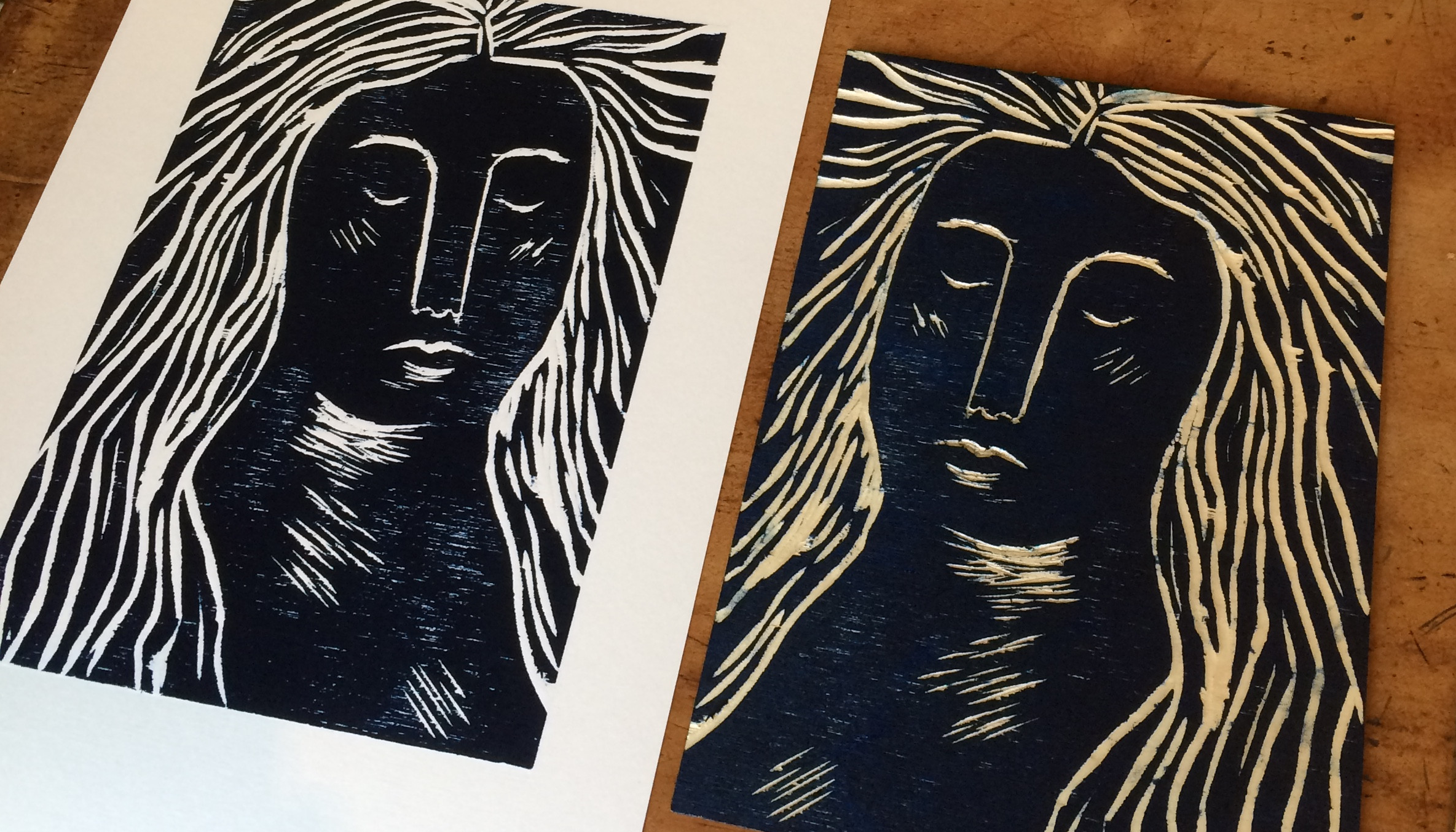Relief Printing
Relief printing is a process where you carve into a block to print a series of colourful layers with. With this technique you use chisels to remove areas of the block that you don’t want to print. Ink is applied to the surface of the finished block in a thin layer using a roller. Paper is then pressed on top to take an impression, which in this case is printed in reverse.
LINOCUT
By removing parts of the lino block using a selection of small chisels you can create a stamp to roll ink onto and transfer a design onto paper or fabric.



WOODCUT
The same process as above but instead using a specialist type of wood to create a printing block that can often transfer the pattern of the grain along with your design.
MULTIPLE PLATE
Each block, whether cut from Lino or Wood, will traditionally be rolled up with individual colours. So to build up a full colour image you will need to create multiple plates to print ontop of each other in succession.


REDUCTION PLATE
You can also create a series of multi-colour prints by a reductive process, which involves cutting and printing the lightest details of a design first, cutting the next lightest colour and so on until you have reduced your block purely to the top layer elements. This is more economical than multiple blocks but slightly stressful as you are destroying the chance to make more prints with each layer of colour. For this reason it is sometimes referred to as a ‘suicide cut’.
COLLAGRAPH
This collage technique is essentially a reverse of carving out a design, and consists of building up a plate to print with using textural materials such as sand, fabrics, string and card.


LASERCUTTING & ENGRAVING
Lasercutters have a wide range of uses within printmaking, including cutting and engraving lino or wood blocks. It is especially useful for creating photographic relief prints. LASERCUTTING & ENGRAVING